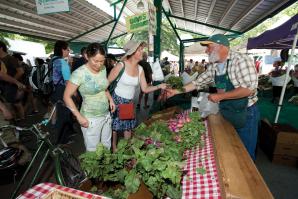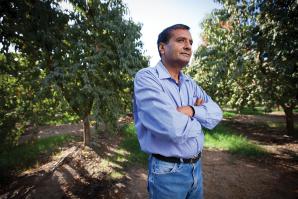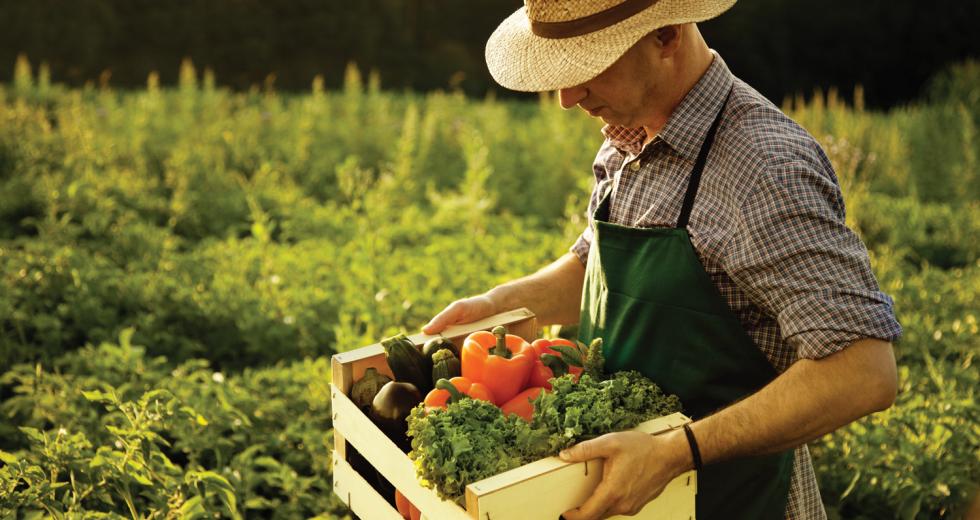In October of last year, Sacramento Mayor Kevin Johnson declared Sacramento the “Farm-to-Fork Capital of America,” presenting the city with a long-term opportunity to build a distinct brand identity that could help the region attract and retain citizens, conventions, tourists and entrepreneurs. It’s especially valuable because a strong regional identity gives energy to the economic engines that make cities successful. Anyone needing proof can look directly to Austin, Texas.
Austin has been making music for literally hundreds of years. But in the 1970s, the city gained a reputation as a place where struggling musicians could launch their careers in front of receptive audiences at casual, live venues. People started talking. And more and more music lovers began to arrive. Finally, nearly two decades later, city leaders slapped a logo on their city that has since resulted in billions of dollars of economic activity. It was largely organic and didn’t require inventing a new wheel.
Marketing Sacramento as the “Farm-to-Fork Capital of America” is about more than community pride. It offers a way to improve the health of our residents and drive incremental visitor dollars to Sacramento by bringing awareness to our region’s local food production, consumption, sustainability and exports. It’s about marketing an identity that will generate incremental business for hotels, restaurants, retail outlets and our entire culinary scene.
Most importantly, embracing and promoting Sacramento’s “Farm-to-Fork Capital of America” identity is about improving the quality of life for our residents.
Some have asked what role any designation really plays in defining a city. If we’re nationally recognized as the “Farm-to-Fork Capital of America,” what will it really matter? Can a self-appointed identity become the legitimate definition of a city?
Austin did it. It’s not the only city that’s been successful in generating massive revenue from a self-appointed identity, but it’s an easy one to point to. In 1991, Austin dubbed itself the “Live Music Capital of the World” and is now reaping annually more than $616 million in economic activity, more than 11,000 jobs and more than $11 million in city tax revenues tied to the music industry.
That live-music designation made sense for Austin because that city’s history is steeped in song, and the city had gained a significant reputation as a place where struggling musicians could launch their careers. All the city needed to do was brand that image and capitalize on the attributes and amenities already in place.
Similarly, food production has long been a vital part of Sacramento’s fabric. Our region is home to roughly 7,000 farms that contain more than 1.5 million acres of farmland, we are the capital city to the largest agricultural producing state in the nation, we boast more than 50 farmers’ markets and are home to the largest Certified Farmers’ Market in California, our city has the third greenest economy in the U.S., and no major city in America is more centrally located amid such a vast range of high-quality farms, ranches and vineyards.
“What I think is interesting about Austin is that they called themselves the Live Music Capital, and then they grew into it,” says Randall Selland, owner of The Selland Group of restaurants. “We are the Farm-to-Fork Capital, and we’re simply promoting what we’ve always been.”
Farm-to-fork in the Sacramento region is not something we need to build into. It’s our heritage, our history and who we are today. Without question, our farm-to-fork assets are genuine and prolific. But how do we capitalize on the 1.5 million acres of farmland, the hundreds of flourishing wineries, and the growing numbers of nationally recognized chefs and restaurants that collectively serve our culinary bounty?
We must make connections between food and tourists. Annually, we welcome more than 15 million visitors to our region, and those visitors spend $2.4 billion at our restaurants, our retail stores, our hotels and at small businesses across the valley.
Larger cities like New York or San Francisco have globally recognized icons (one has a giant red bridge, the other has a 300-foot copper lady) that help position those destinations in the eyes of consumers long before marketing and tourism materials were ever printed. But, cities like Sacramento and Austin don’t have landmarks that are recognized internationally, nor do they have unlimited budgets that allow them to extend tourism messages to the far corners of the globe.
In that regard, smaller cities often rely on special events and unique local attributes to generate third-party media and visitor endorsements to further drive tourism.
“There are a couple of reasons why tourism is such an important industry,” says California Secretary of Agriculture Karen Ross. “Last year, over $100 billion was spent on visiting different parts of California, and almost $25 billion of that was spent on food and wine.”
If we’re already generating $2 billion through regional tourism, then we’ll further grow those economic impacts by giving consumers focused, tangible and compelling reasons to visit our city.
“We’re not pretending to be farm-to-fork, and we’re not marketing ourselves to get to that point,” Selland says. “We’re already there.”
Just as music has always been part of the heritage and fabric of Austin, food is in Sacramento’s soul. And it isn’t just about brick-and-mortar establishments. While the proliferation of food trucks has become a national phenomenon, those in our region seize opportunities that other cities can’t offer.
“What’s both cool and a hindrance for a food truck is that you have to go out and source your own food because you can’t find suppliers to deliver directly to your truck,” says Chris Jarosz, owner of the Wicked ‘Wich truck in Sacramento. “What’s great about this region is that we’re able to go out and find produce and actually pick it up on site, which is a cool transition into the farm-to-fork movement.”
The opportunities for Sacramento are substantial but, like anything else worthy of considerable investment, there is significant work ahead. The reality is that this farm-to-fork identity won’t succeed unless the regional community embraces and claims it.
Austin built its identity by collectively investing in and growing musical events, venues and industry assets, and by branding its marketing materials with the “Live Music Capital of the World” designation. But that was only the jumping-off point. The cab drivers, elected officials, businesses, media, hoteliers, restaurateurs, nightclubs and citizens champion the identity. And when you fly into Austin, there are signs in Bergstrom International Airport reminding you that you’ve just landed in Austin, Texas, “The Live Music Capital of the World.” In other words, Austin’s collective enthusiasm helped its identity grow internationally.
Austin’s example should serve as a roadmap for Sacramento. People love cities in part because of how they identify with them. And when people truly identify with a city, they will find reasons to visit it regularly and, sometimes, to live there permanently. Those are elements that help to grow a region’s economy, which ultimately benefits residents.
If you travel to Austin, you know that, if nothing else, you can go out and see great, live music seven nights a week. We want travelers to know that when they visit Sacramento, for whatever reason, they’re going to eat really well and that the great majority of their meals — from the produce to the proteins, the craft beers to the cabernets and the olives to the oils — will have been sourced locally.
Collectively investing in the region’s branding initiatives builds our identity and celebrates local sustainability and food production by featuring the farmers, chefs and robust culinary community. The return on that investment will be a swelling of community pride and an increase in incremental visitor dollars through new business for hotels, restaurants, retailers and food producers.
Clearly, there are differences between being The Live Music Capital of the World and the Farm-to-Fork Capital of America. And I’ll dare say that while not everyone likes live music, everyone eats. In that regard, there isn’t a resident or visitor that won’t find some personal connection to what we’re doing here in Sacramento. If that connection serves as motivation to visit and in turn creates some incremental revenue deposited into our economy, those of us who call this region home will measurably benefit from a reality that’s existed here for more than 150 years.
Recommended For You

Root Cause
The campaign behind Sacramento’s foodie identity
It was the last farmer’s market of the season, and the photo-op recalled The Last Supper. Standing in Cesar Chavez Plaza, Mayor Kevin Johnson spread his arms behind two tables piled high with fresh fruits and vegetables. And with scores of white-aproned restaurateurs to his right and left, he unveiled a logo promoting Sacramento as an agronomical Eden.

Slim Pickings
A shortage of farm labor impacts food harvests
Coasting through the sweeping fields of California’s Central Valley, it’s not unusual to spot collections of crouching figures diligently tending crops. These primarily Hispanic immigrants prune, thin, harvest and grow much of California’s renowned produce. But over the past decade or so, hundreds of thousands of these indispensable farm workers have vanished.



